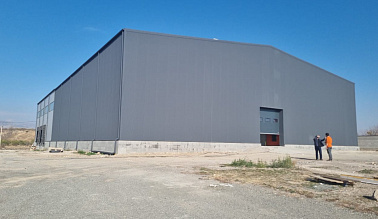Key Factors for Investing in Agriculture
06.05.2024 | Investing
Investing in agriculture is considered a stable and promising direction for medium- and long-term investments. This industry has a constant demand for its products and an expected growth in this demand. Investments in agriculture are directed towards a sector that has historically been and will continue to be in demand.
Agriculture remains attractive to investors due to several key factors:
Investing in agriculture, like in any other industry, has both advantages and disadvantages.
Potential investors should pay attention to the following advantages of this sector:
When investing in agriculture, there is no universal checklist that guarantees high profitability due to the variety of directions and instruments in this field.
It is important to follow some general recommendations:
Our experts in various fields are ready to answer your questions via email: info@agrovent.com
Agriculture remains attractive to investors due to several key factors:
- Continuous growth in the number of consumers. Currently, the world's population exceeds 8 billion people. According to UN forecasts, by 2037, this number will increase to 9 billion, and by 2058, it will reach 10 billion. With the increasing population, the demand for food rises, and the agricultural sector will need to continuously increase production.
- Need for technologies due to limited available land resources. Restrictions on the amount of arable land in the world force the agricultural sector to develop and implement new technologies. This may include vertical farming and other innovations aimed at increasing soil fertility and crop yield.
- Government support and subsidies. Many countries actively support agriculture as part of their food policies. This is done to ensure food security and support this vital industry.
- Agriculture is focused on meeting basic human needs for food and is essential for society. However, when considering investments in this sector, it is important to remember that not every investment in agriculture will necessarily be profitable.
Investing in agriculture, like in any other industry, has both advantages and disadvantages.
Potential investors should pay attention to the following advantages of this sector:
- Demand for products: Agricultural products are always in demand, and considering the population growth, the demand for them is constantly increasing.
- Increase in the price of products: Rising prices of finished products lead to increased investor income.
- Positive impact on the economy: Investments in agriculture help support the economy of the country where the project is implemented.
- Relatively low competition: There is usually less entrepreneurial activity in the agricultural industry compared to other sectors.
- Dependency on climate and seasonal factors: Results largely depend on weather conditions.
- Long payback periods: Producing agricultural products takes time and effort.
- Difficulties in marketing: High yields can lead to price and profit reductions.
- Lack of insurance guarantees: Unforeseen factors can affect the marketability of products.Low labor productivity growth and high costs for equipment depreciation and renewal.
- Serious analytical work: Studying investment objects requires significant effort due to a lack of information and weak investment mechanisms in the agricultural sector.
When investing in agriculture, there is no universal checklist that guarantees high profitability due to the variety of directions and instruments in this field.
It is important to follow some general recommendations:
- Assessing financial capabilities: before starting to invest, it is important to calculate income and expenses, including future forecasts. A regular investor with a small capital can simply use paper, a calculator, and a pen, while business people are advised to consult an accountant.
- Creating a financial safety cushion: it is not advisable to invest with debts and loans, and having a financial safety cushion is recommended. It is advisable to have reserves of funds for three to six months of all expenses.
- Defining investment goals: goals can vary - preserving funds, increasing capital, or generating passive income. It is important for the goal to have clear timeframes.
- Identifying risks: each project and investment instrument has its risks, so it is important to analyze companies carefully and involve investment consultants as needed.
- Defining your own strategy: beforehand, determine your investment strategy, whether it is conservative, moderate-risk, or more risky, depending on your preferences.
- Choosing a project for investment: compare the efficiency of different investment projects, evaluate potential profits, and choose the most promising ones.
Our experts in various fields are ready to answer your questions via email: info@agrovent.com
